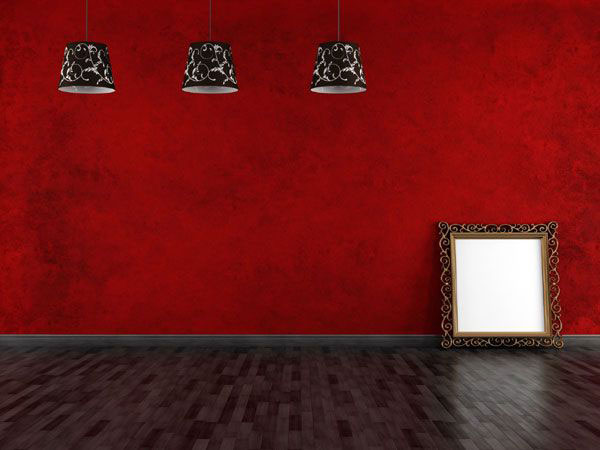A fresh coat of paint does wonders for a house. Keep a few rules in mind while painting the exterior portion of your home. If your house is old, it will have started to develop problems with its appearance. That shining coat of paint will most likely have lost its lustre and chipped off in some places. The vibrant colours that graced your house will have faded and will be a shadow of their former splendour. A new coat of paint is a great way to infuse life into your houses appearance. However, before you go ahead and paint the exteriors of your house, here are a few tips you can follow to improve the overall results. In this articleColour schemeColour choiceAccent and depthPaint typeColour scheme The first step to painting your house is to decide on a colour scheme. If you are simply thinking of touching up the existing colours, you need not go about selecting new colours. You will only have to buy a few tins of the old colours and use them to carry out your work. If you decide to paint your house in a whole new colour, the first decision will involve which colour to choose. The first rule to remember is to take a walk through your neighbourhood and observe the general colour scheme that is prevalent among the houses. Your home should conform to these colours. Otherwise, your house colours will stick out like a sore thumb. Using too many bright colours can leave your house resembling a circus tent. On the other hand, dull colours will make the house look washed out. Strive to achieve a balance of a solid background with a few splashes of colour. Also, make sure that your colour scheme is appropriate so that the different colours of the house itself do not clash with each other. An area like your roof will have a standard red or brown colour if it is overlaid with tiles. You also have to keep this colour in mind so that the house does not look like an eyesore later. Colour choice Once you have decided on a colour scheme for your house, you will now have to choose the exact shade. Just glancing through a catalogue of paint shades can leave you bewildered, considering the sheer number of shades available for each colour. Once you know what you want the primary colour to be, focus on the shades of only that colour. Divide the shade card into two sections of darker and lighter hues. Then narrow your selection down to a few possible choices. Once you are reasonably confident with your choices, you can go to the paint shop and let them know what colours you are interested in. In some shops, they will allow you to purchase a small quantity of the colours you are interested in. These are called tester samples. With a tester sample, you can paint a small area of your house with different shades of a colour. This enables you to get an idea of what your house will look like when it is finally painted. You can also factor in other conditions like dust, the glare of the sun, rain, etc. Accent and depth Areas like the trim around the windows and doors, drainage pipes, columns, and doorways are always painted a different colour from the main house for an added effect. The usual choice of colour for these areas is white. While there is nothing wrong with white, there are instances where a different colour might give the appearance of an added depth to the house. Another simple option, apart from white, is to use darker shades of the same base colour that will be on the rest of the house. This works best if you are painting most of your house in a reasonably light shade. On the other hand, for a darker base colour, look out for a suitably contrasting option. Paint type Since you are painting the external part of your house, the type and quality of the paint will play a big role in your selection as well. Take into consideration the fact that your house is going be exposed to external elements. For example, water-based paint will have to be touched up more often than an acrylic one. On the other hand, acrylic paint dries faster. The drawback of acrylic is that it has a tendency to chip easily. Also decide between paints with a glossy or matte finish. While glossy paints will give you a house with sheen, days of intense sunlight will increase the glare emanating from the building. Paints with a matte finish may leave your house looking dull, as the paint ages. Doing your homework before you take the plunge into painting your home will greatly enhance the quality of the final results.
A fresh coat of paint does wonders for a house. Keep a few rules in mind while painting the exterior portion of your home. If your house is old, it will have started to develop problems with its appearance. That shining coat of paint will most likely have lost its lustre and chipped off in some places. The vibrant colours that graced your house will have faded and will be a shadow of their former splendour. A new coat of paint is a great way to infuse life into your house's appearance. However, before you go ahead and paint the exteriors of your house, here are a few tips you can follow to improve the overall results.
Colour scheme
The first step to painting your house is to decide on a
colour scheme. If you are simply thinking of touching up the existing colours, you need not go about selecting new colours. You will only have to buy a few tins of the old colours and use them to carry out your work.
If you decide to paint your house in a whole new colour, the first decision will involve which colour to choose. The first rule to remember is to take a walk through your neighbourhood and observe the general colour scheme that is prevalent among the houses. Your home should conform to these colours. Otherwise, your house colours will stick out like a sore thumb. Using too many bright colours can leave your house resembling a circus tent. On the other hand, dull colours will make the house look washed out. Strive to achieve a balance of a solid background with a few splashes of colour.
Also, make sure that your colour scheme is appropriate so that the different colours of the house itself do not clash with each other. An area like your roof will have a standard red or brown colour if it is overlaid with tiles. You also have to keep this colour in mind so that the house does not look like an eyesore later.
Colour choice
Once you have decided on a colour scheme for your house, you will now have to choose the exact shade. Just glancing through a catalogue of paint shades can leave you bewildered, considering the sheer number of shades available for each colour. Once you know what you want the primary colour to be, focus on the shades of only that colour. Divide the shade card into two sections of darker and lighter hues. Then narrow your selection down to a few possible choices.
Once you are reasonably confident with your choices, you can go to the paint shop and let them know what colours you are interested in. In some shops, they will allow you to purchase a small quantity of the colours you are interested in. These are called 'tester samples'. With a tester sample, you can paint a small area of your house with different shades of a colour. This enables you to get an idea of what your house will look like when it is finally painted. You can also factor in other conditions like dust, the glare of the
sun, rain, etc.
Accent and depth
Areas like the trim around the windows and doors, drainage pipes, columns, and doorways are always painted a different colour from the main house for an added effect. The usual choice of colour for these areas is
white. While there is nothing wrong with white, there are instances where a different colour might give the appearance of an added depth to the house.
Another simple option, apart from white, is to use darker shades of the same base colour that will be on the rest of the house. This works best if you are painting most of your house in a reasonably light shade. On the other hand, for a darker base colour, look out for a suitably contrasting option.
Paint type
Since you are painting the external part of your house, the type and quality of the paint will play a big role in your selection as well. Take into consideration the fact that your house is going be exposed to external elements. For example, water-based paint will have to be touched up more often than an acrylic one. On the other hand, acrylic paint dries faster. The drawback of acrylic is that it has a tendency to chip easily.
Also decide between paints with a glossy or matte finish. While glossy paints will give you a house with sheen, days of intense sunlight will increase the glare emanating from the building. Paints with a matte finish may leave your house looking dull, as the paint ages.
Doing your homework before you take the plunge into painting your home will greatly enhance the quality of the final results.































